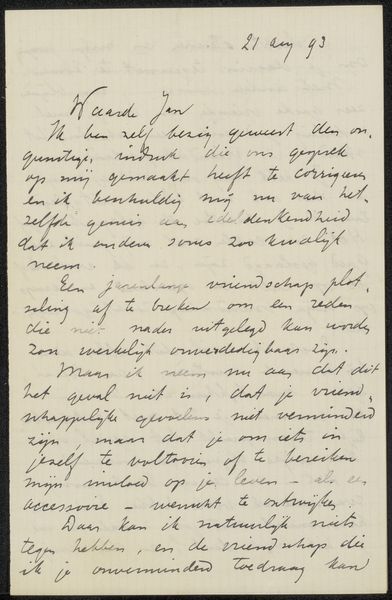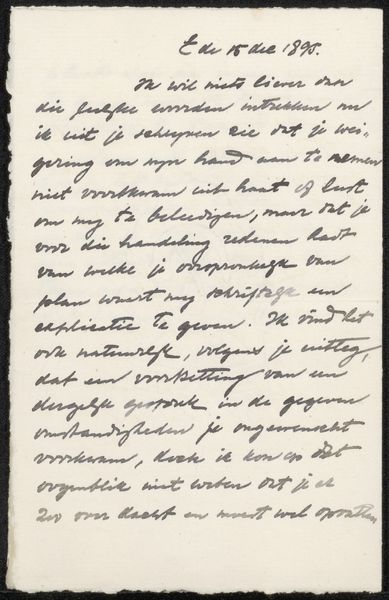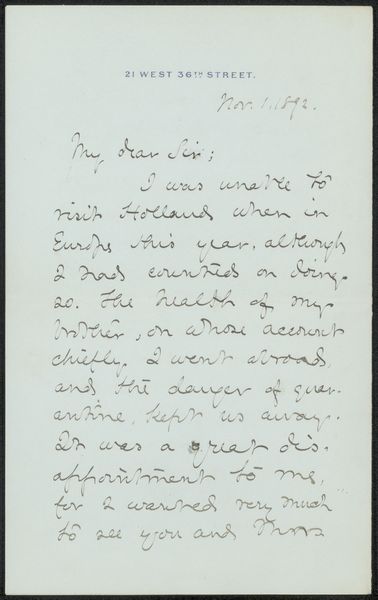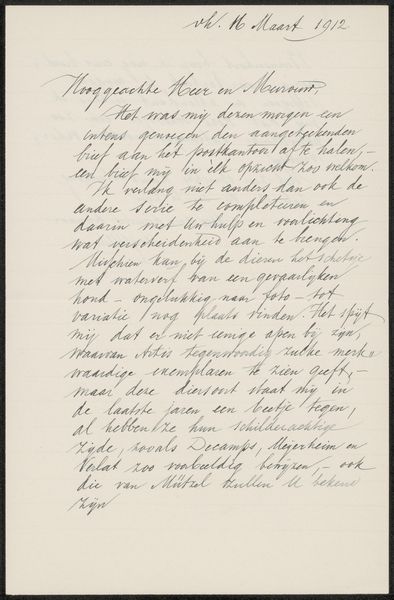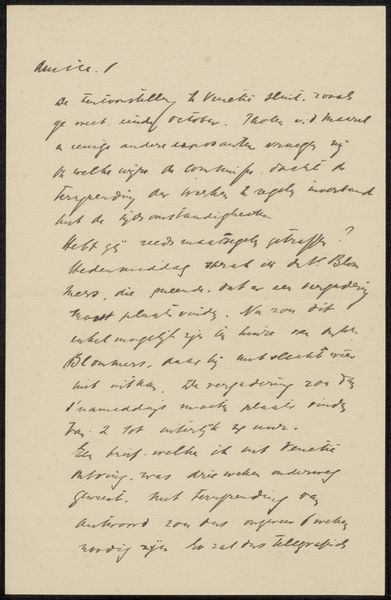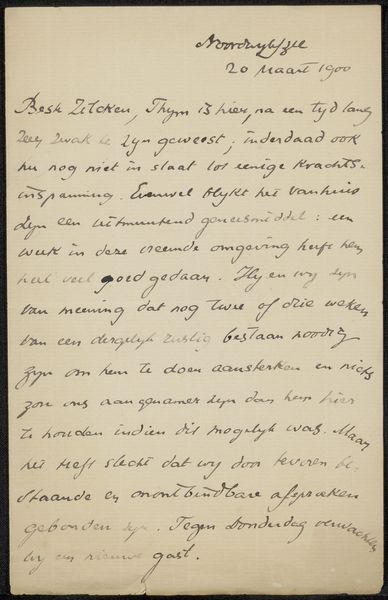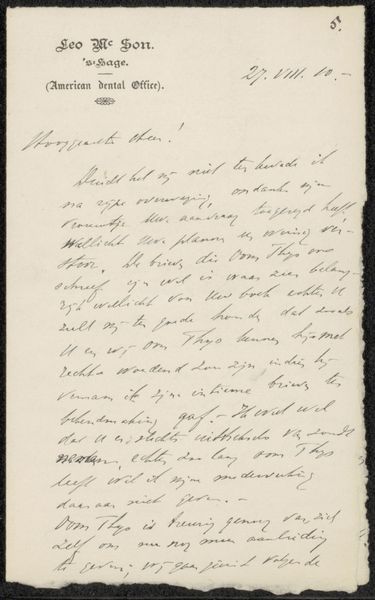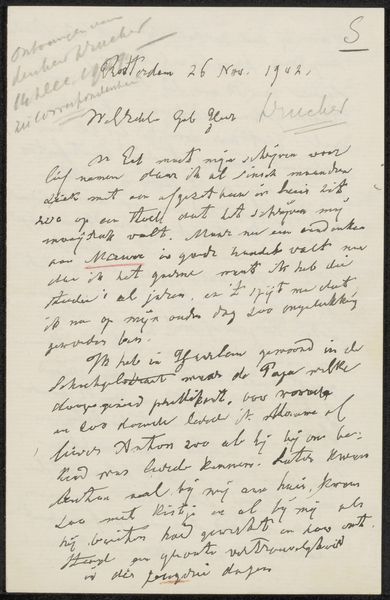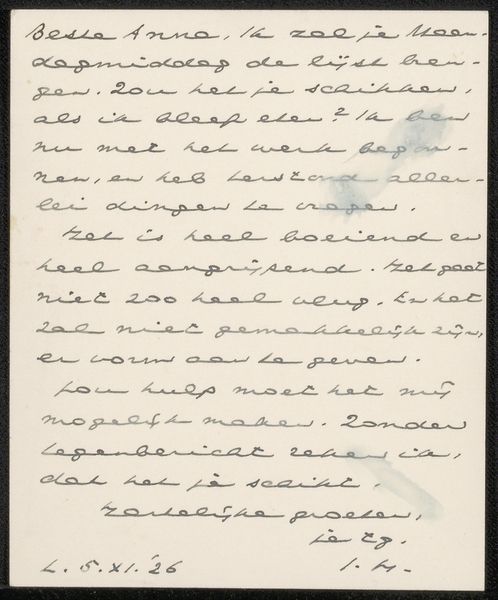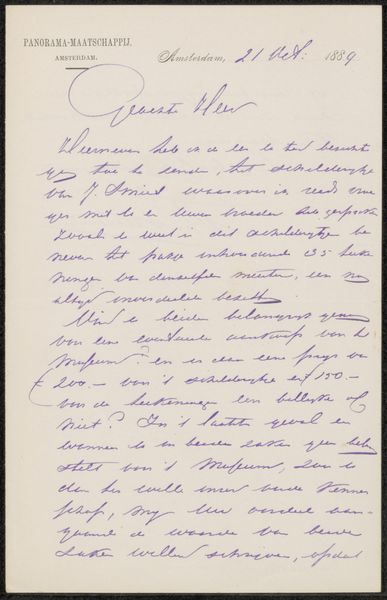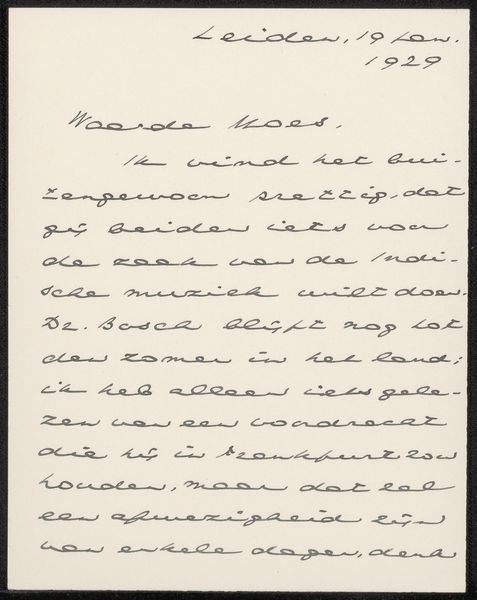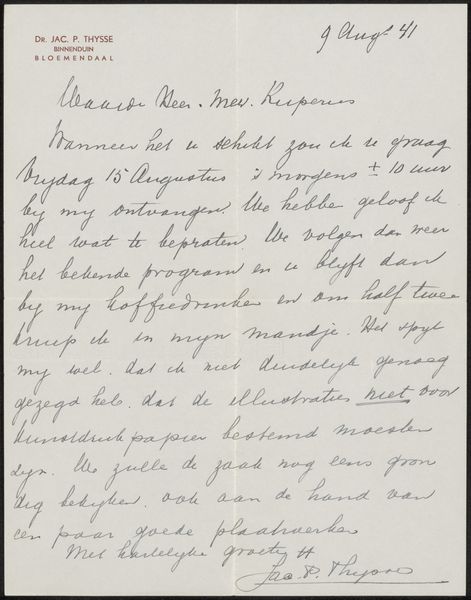
drawing, paper, ink, pen
#
drawing
#
comic strip sketch
#
hand-lettering
#
hand drawn type
#
hand lettering
#
paper
#
personal sketchbook
#
ink
#
hand-drawn typeface
#
pen-ink sketch
#
pen work
#
sketchbook drawing
#
pen
#
sketchbook art
#
calligraphy
Copyright: Rijks Museum: Open Domain
Curator: We're looking at "Brief aan Jan Veth," possibly created between 1914 and 1919, attributed to an artist associated with the Rijksakademie van Beeldende Kunsten. It's rendered in pen and ink on paper. Editor: It strikes me immediately as something intimate. A handwritten note. It has a very personal quality, doesn’t it? Almost secretive. Curator: Precisely. Its material components underscore this immediacy: The ink bleeds ever so slightly into the paper, suggesting a swift execution, a correspondence not meant for broad circulation, perhaps. Editor: And look at that almost frenetic hand! It’s not quite calligraphy but clearly aiming at some degree of formal grace, yet teeming with restless energy! Almost as if the artist can barely keep up with their own thoughts! Curator: Yes, the line fluctuates, thickens and thins according to pressure, implying spontaneity and directness of expression, almost a stream of consciousness in visual form. Structurally, the orientation is linear but organically so, not rigidly composed but dynamically laid out upon the page. Editor: It’s curious…the way the text *becomes* the image! I find myself trying to decipher meaning not just from the words, but from the shapes they form together, the rhythm they create. Was this typical correspondence? Or was it also understood, somehow, as *art*? Curator: A pertinent question! Note, too, how graphic elements mingle with cursive passages, a sophisticated interplay that activates the entire visual field, a kind of dialogue *between* formal script and spontaneous mark making…a very early form of graphic storytelling perhaps? Editor: The more I gaze, the more nuances pop out; I get this funny feeling as though the letter's less about simple information and more about the sharing of one’s mental state through raw strokes on the paper. The urgency to connect despite being so far removed? Curator: That resonance between physical execution and potential psychological expression proves especially compelling; the very act of inscription becomes its own form of intimate performance, and the piece’s overall structure points in fascinating ways! Editor: I came in expecting simple documentation. I now leave viewing handwriting—some trace on a page—as something almost monumental in sharing parts of a person.
Comments
No comments
Be the first to comment and join the conversation on the ultimate creative platform.
